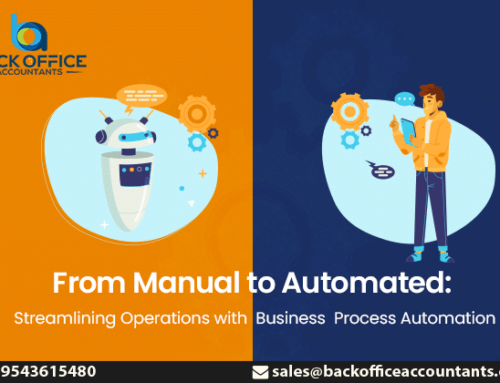Optimizing Accounts Receivable collection is the simplest way to free up the capital, improve liquidity, reduce debt and pave way for business growth with the right investments.
Unfortunately small and medium businesses fall short of having sufficient working capital at hand. In almost all cases this happens when a significant part of their revenue is trapped in the balance sheets due to inefficient Accounts Receivable policies. If you are a business facing similar problems then this blog is for you.
As a remote accounting firm, Back Office Accountants has worked with many businesses that faced working capital and revenue collection problems. And in the majority of the cases, efficient Accounts Receivable policies happen to be the root cause of these cash problems.
So in this blog, we list out the common causes we often identify among businesses suffering from Accounts Receivable collection problems. And then give you Accounts Receivable tips that can help you improve your Accounts Receivable. Read on:
Why do most businesses face Accounts Receivable collection problems?
Businesses in an effort to ramp up sales, often provide liberal discounts and payment terms that over time will create Accounts Receivable collection problems. When these businesses happen to have inefficient Accounts Receivable policies they end up with cash trapped and are forced to borrow to meet their obligations. In addition to losing opportunities to invest and grow, a business may end up paying finance charges pushing themselves on the back foot.
In addition to the liberal extensions, some of the following are common causes of Accounts Receivable collections include unorganized Accounts Receivable process, lack of adequate tools, and training to AR resources on industry-best practices. So how do you improve the Accounts Receivable process to improve the working capital? Read on to know what our Accounts Receivable experts at Back Office Accountants have to say:
How to improve Accounts Receivable collections?
1. Proactive & Consistent AR Collection Efforts: Every business must have standard and consistent debt collection procedures as this is the simplest way to improve AR. For example, following up with a customer after 60-days of non-payment in a rude or angry tone will not help. Ensure you have a consistent and proactive procedure that deals with invoices in sequential stages starting with a paper invoice.
Firmer communication is to be resorted after emails, and other forms of communication do not result in payments. To make this possible, the Accounts Receivable team must have the required paperwork and metrics like AR ageing Reports and Accounts Receivable turnover ratios.
2. Generate AR Aging Reports: Identifying the current AR problems and knowing the magnitude of the task ahead is the first step in improving your AR process. Generating an Accounts Receivable ageing report is how you can do this if you are not doing it already. An AR ageing report tracks and measures the payment status to give you a clear idea about the pending payments and steps to be taken in case of any potential problems.
In addition to this calculation, calculate AR turnover ratio which is the average number of times a year business collects its Accounts Receivable. If the ART is 12 then a business collects Accounts every 30 days on average. And this can give you a perspective on the AR collection.
3. Payment Plans & Discounts: Proactive collection efforts powered by AR ageing reports and AR metrics will be helped by offering early payment discounts to the clients. Similarly, for clients who are long overdue, payments can be offered based on the industry to improve collection efforts. However, ensure the payments plans and discounts are customized based on the industry and multiple payments processing methods are offered.
Persistent collection efforts guided by AR metric and collection reports and early payment offers can help any business improve their AR collection efforts, according to our Accounts Receivable experts at Back Office Accountants.
4. Review Accounts Receivable Process. If the above three steps do not yield enough results it’s time to have a careful look at the internal Accounts Receivable process. Some of the key internal processing we suggest you have a look at are:
1. Invoice Processing: In the majority of cases, businesses may delay their invoicing procedures due to short staffing or multitasking. On-time invoicing must be set in stone if you are looking to improve Accounts Receivable.
2. Billing Cycle: There are no steadfast rules about the billing cycle. While businesses follow a set time, you can adopt a new billing cycle if the current one is not working for you. We recommend taking the industries of your clients into account before making amends.
3. Credit Policies: Credit policies and lax payments terms account for major AR problems which is why they must be reviews periodically. Considering amending the policies of the clients falling short on deadlines.
In spite of all the best practices, the possibility of AR collections falling short of your goals. A strained and unorganized Accounts Receivable process with too many touchpoints is often the invisible reason for these problems. But as the majority of small and medium businesses lack expertise and sufficient manpower, this is where remote accounting firms like Back Office Accountants can help.
With a team of experienced Accounts Receivable experts, Back Office Accountants can both plug the need gaps and also provided comprehensive end-to-end Accounts Receivable Services from the ground up. If you are an SMB looking to outsource Accounts Receivable Services, you can contact us here: https://www.backofficeaccountants.com/







